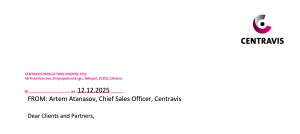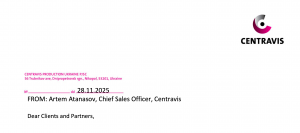
In the competitive world of industrial manufacturing and engineering, the quest for materials that offer superior performance without escalating costs is perpetual. Balev Steel, an innovation by Centravis, introduces two advanced stainless steel grades—Balev 304L® and Balev 316L®—that not only meet but exceed the demanding requirements of modern applications. These materials present significant economic advantages to users, and understanding these benefits is essential for technical specialists, energy engineers, and industry professionals seeking cost-effective solutions without compromising on quality.
Balev Steel represents a significant advancement in stainless steel technology. By employing a proprietary heat treatment process, Centravis has enhanced the mechanical properties of the traditional TP304L and TP316L stainless steels. The result is a material with higher yield and tensile strength, allowing for the use of thinner walls in applications while maintaining structural integrity. This weight reduction leads to decreased material usage, directly impacting cost savings. Moreover, Balev Steel maintains, and in some cases improves, corrosion resistance compared to its traditional counterparts, ensuring longevity and reliability in various environments.
Material Cost Reduction
One of the most compelling economic benefits of Balev 304L® and Balev 316L® is the potential for substantial material cost reductions. The enhanced strength of these materials permits engineers to design components with thinner walls—often up to 40% thinner than those made with traditional stainless steels. This reduction in wall thickness means that less raw material is required to produce the same component, directly lowering material expenses. For large-scale projects or mass-produced items, the cumulative cost savings can be significant.
Additionally, Balev Steel offers a cost-effective alternative to higher alloyed stainless steels and nickel-based alloys. By providing comparable mechanical properties and corrosion resistance, Balev Steel allows users to achieve the desired performance without the premium price tag associated with more exotic materials. This balance of cost and performance makes Balev Steel an attractive option for companies aiming to optimize their budgets.
Dr. Andriy Balev, Dipl. Materials Engineer and Head of R&D at Centravis, sheds light on the motivation behind developing Balev Steel:
“Our primary objective was to create a material that delivers superior performance while offering tangible economic benefits. We recognized that engineers and manufacturers are under constant pressure to optimize costs without sacrificing quality. By enhancing the properties of well-known stainless steel grades, we provide a solution that meets these needs without requiring a complete overhaul of existing processes.”
Weight Savings and Operational Efficiency
The reduction in material thickness not only decreases costs but also results in lighter components. In industries such as aerospace and automotive, where weight is a critical factor, this can lead to improved fuel efficiency and overall performance. Lighter vehicles consume less fuel, leading to cost savings over the operational life of the vehicle and contributing to environmental sustainability through reduced emissions.
For transportation and logistics, lighter components mean lower shipping weights, which can reduce transportation costs. This is particularly beneficial when dealing with international shipping or when components need to be moved frequently during the manufacturing process. The cumulative effect of these weight savings contributes to a leaner, more efficient operation.
Manufacturing and Fabrication Benefits
From a manufacturing standpoint, Balev Steel offers several advantages that translate into economic benefits. Despite their enhanced strength, Balev 304L® and Balev 316L® maintain excellent workability. They can be processed using standard fabrication techniques without the need for specialized equipment. This ease of fabrication reduces machining time and tool wear, leading to lower manufacturing costs.
The weldability of Balev Steel is another significant advantage. Users can employ standard welding processes suitable for stainless steels, minimizing the need for additional training or investment in new welding technology. The compatibility with existing manufacturing infrastructure means that the transition to using Balev Steel can be smooth and cost-effective.
Moreover, the potential reduction in production time due to the use of thinner materials can increase throughput. Faster production cycles enable manufacturers to meet demand more efficiently, potentially increasing revenue and market share.
Longevity and Maintenance Savings
Balev Steel’s enhanced corrosion resistance and mechanical properties contribute to longer service life for components. This durability means that parts need to be replaced less frequently, reducing long-term maintenance costs. For industries where equipment downtime can be costly, the reliability offered by Balev Steel ensures continuous operation and productivity.
The reduced need for maintenance and replacements not only saves money but also minimizes the logistical challenges associated with servicing equipment. Companies can allocate resources more effectively, focusing on growth and innovation rather than ongoing repairs.
Comparative analysis and use cases
When comparing Balev Steel to traditional TP304L and TP316L stainless steels, the economic advantages become evident. Balev Steel’s higher strength allows for thinner walls, leading to material cost savings that can reach up to 20%. This reduction does not come at the expense of performance; instead, it enhances the overall quality of the components.
Compared to duplex grades like S31803 and S32304, Balev Steel offers similar or improved mechanical properties and corrosion resistance at a lower cost. Additionally, Balev Steel’s superior weldability and workability make it more user-friendly, reducing manufacturing complexities and associated costs.
Environmental and Regulatory Benefits
In today’s environmentally conscious market, materials that contribute to sustainability can offer indirect economic benefits. The weight reduction achieved with Balev Steel leads to lower energy consumption during the operation of equipment or vehicles. This efficiency not only reduces operating costs but also helps companies meet environmental regulations and standards, avoiding potential fines and enhancing their corporate image.
Companies that prioritize sustainability may also find that using Balev Steel aligns with their corporate responsibility goals, potentially attracting customers and investors who value environmentally friendly practices.
Conclusion
Balev 304L® and Balev 316L® represent a significant opportunity for companies to enhance performance while achieving economic savings. The combination of reduced material costs, improved operational efficiency, and lower maintenance expenses offers a compelling case for adopting Balev Steel in various applications. The material’s compatibility with existing manufacturing processes further simplifies its integration into current operations.
By choosing Balev Steel, companies can position themselves competitively in the market, offering high-quality products while maintaining cost-effectiveness. The support and expertise provided by Centravis ensure that users can maximize the benefits of this innovative material.



